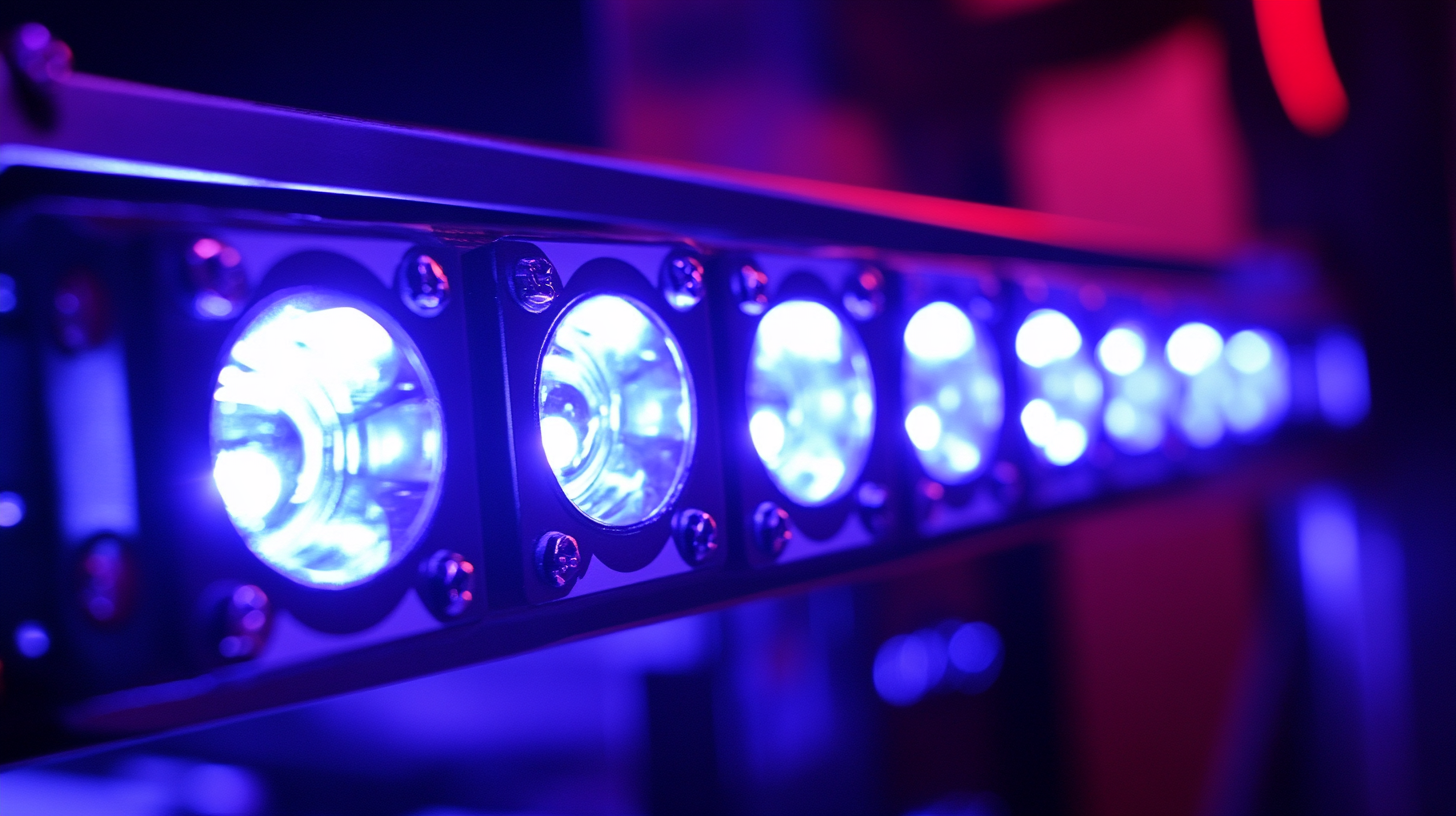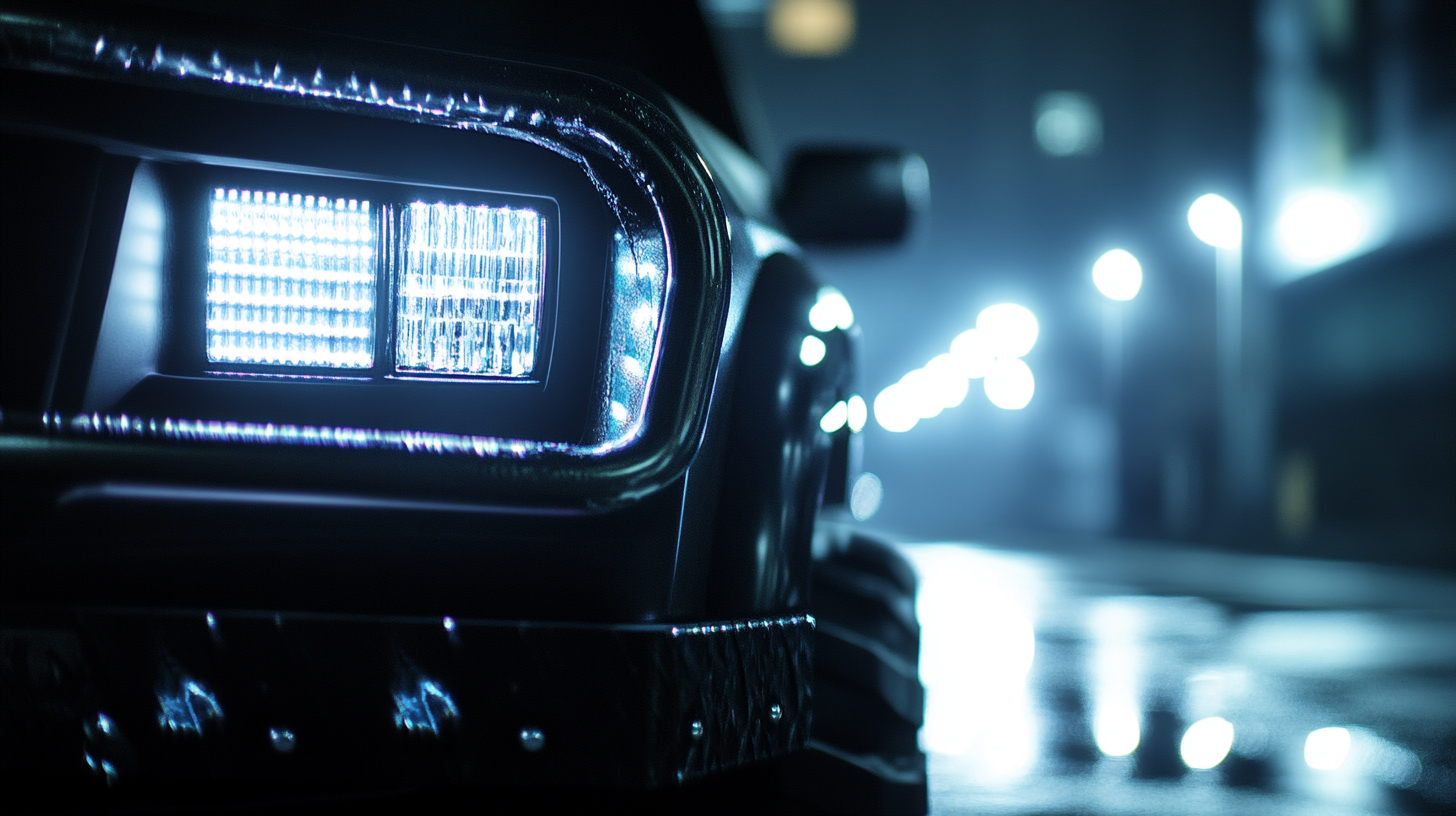When it comes to enhancing visibility and safety during nighttime adventures or off-road excursions, the importance of choosing the right Light Bar cannot be overstated. With a plethora of options available globally, selecting the best Light Bar tailored to your unique needs can feel overwhelming. From determining the optimal size and brightness to understanding different beam patterns and mounting options, various factors play a crucial role in making an informed decision. This blog will delve into top strategies for navigating the vast array of choices, ensuring you find a Light Bar that not only meets your specific requirements but also complements your vehicle or setup perfectly. Whether you’re an avid outdoorsman, a professional in need of reliable lighting, or someone looking to upgrade their vehicle's aesthetics and functionality, our guide aims to equip you with the knowledge necessary to illuminate your path effectively.

When it comes to selecting the right light bar, understanding the various types available is crucial.
Light bars can typically be categorized into several types, including
LED, HID, and
halogen.
LED light bars are known for their energy efficiency and longevity, making them a popular choice for both professional and recreational use.
They provide bright illumination while consuming less power and emitting minimal heat, which is ideal for extended use in rugged environments.
On the other hand, HID (High-Intensity Discharge) light bars offer intense brightness and are well-suited for off-road driving, where visibility is paramount.
They tend to be more powerful than conventional halogen lights, but may require a warm-up period to reach optimum brightness.
Halogen light bars, while less common in newer designs, are still favored for their affordability and availability.
They produce a warm light but may not last as long or shine as brightly as LED or HID options.
By considering the advantages and limitations of each type, users can make informed decisions based on their specific lighting needs,
whether for automotive use, outdoor activities, or industrial applications.

When selecting the best light bar for your unique needs, several key factors should be carefully considered to ensure optimal performance and efficiency. First, the brightness and lumen output are crucial. According to a report by the U.S. Department of Energy, a light bar should ideally have a lumen output ranging from 1,000 to 10,000 lumens, depending on the intended use. This allows for adequate visibility during nighttime activities, whether for off-roading adventures or emergency response operations.
Another significant factor is the beam pattern. Light bars typically offer different beam configurations such as spot, flood, or a combination of both. A study by the International Association of Lighting Designers indicates that the right beam pattern can enhance visibility by up to 75% in adverse weather conditions. Furthermore, considering the durability and waterproof rating of the light bar is essential, as choosing a model with an IP rating of at least IP67 ensures it can withstand various environmental challenges. This level of protection reflects a commitment to longevity and reliability, which are vital for any outdoor lighting solution.
When selecting a light bar, evaluating brightness and beam patterns is crucial for meeting your specific needs. Brightness, typically measured in lumens, directly impacts visibility. A higher lumen output means greater illumination, which is essential for off-road driving or work environments requiring detailed visibility in low-light conditions. However, it's important to balance brightness with energy consumption; selecting a light bar that outputs sufficient lumens without excessive power drain is key for optimal efficiency.
Beam patterns also play a significant role in light bar selection. There are generally three types: flood, spot, and hybrid. Flood beams provide a wide spread of light, ideal for illuminating large areas, while spot beams focus light into a narrow beam, perfect for long-range visibility. Hybrid patterns combine both flood and spot, offering versatility for different driving conditions. Assessing the terrain and your typical use cases can help you determine which beam pattern suits your unique needs best, ensuring you have the right light bar for safe and effective operation in various environments.

When selecting a light bar, understanding the impact of mounting positions on performance and visibility is crucial. According to a recent study by the Society of Automotive Engineers (SAE), the angle and elevation at which a light bar is mounted can significantly affect its beam spread and intensity. For instance, mounting a light bar too low can result in a narrow illumination area, leading to diminished visibility at greater distances. Studies indicate that optimal mounting height should be approximately 36 inches from the ground to ensure an ideal balance between focused light output and widespread visibility.
Additionally, the position of the light bar influences its ability to disperse light at various angles. Research from the National Highway Traffic Safety Administration (NHTSA) highlights that a well-mounted light bar reduces glare for oncoming drivers while enhancing the visibility of obstacles on the road. Mounting on a vehicle's roof can significantly increase horizontal visibility and reduce light loss due to obstructions created by the vehicle's structure. In fact, vehicles equipped with properly mounted light bars can improve nighttime driving safety by over 30%, as reported by industry surveys. Therefore, a strategic approach to mounting can enhance both performance and safety.
When choosing an off-road light bar, understanding the differences between LED and halogen options is crucial to meeting your specific lighting needs. LED light bars have gained significant popularity due to their energy efficiency and longevity. They typically consume less power while providing a brighter, more focused beam, making them ideal for various off-road activities such as night driving and rugged adventures. Additionally, LEDs have a longer lifespan, which means less frequent replacements, ultimately saving you money in the long run.
On the other hand, halogen light bars offer a traditional option that some off-road enthusiasts still prefer. While they may not match the efficiency and lifespan of LED lights, halogens can provide a warm light that some users find appealing for certain applications. They tend to be more affordable upfront and are readily available, making them a choice worth considering for budget-conscious buyers. However, it's essential to weigh the pros and cons of halogen vs. LED based on your specific off-road activities, desired brightness, and usage frequency to make an informed decision that suits your unique needs.
| Feature | LED Light Bar | Halogen Light Bar |
|---|---|---|
| Lifespan | 25,000 - 50,000 hours | 1,000 - 2,000 hours |
| Brightness | Higher (up to 10,000 lumens) | Lower (up to 1,500 lumens) |
| Energy Efficiency | More efficient | Less efficient |
| Heat Emission | Minimal | High |
| Durability | Highly durable (shock resistant) | Less durable |
| Cost | Higher initial cost | Lower initial cost |
| Applications | Off-road, emergency vehicles, construction | General use, older vehicles |
